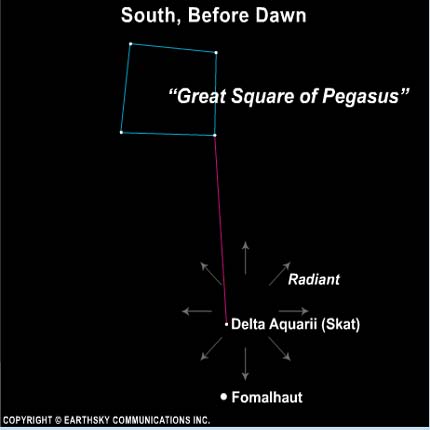Earthsky.org, 7/23/13, Bruce McClure, Deborah Byrd

The long, rambling Delta Aquarid meteor shower can be seen across the entire Earth, and sky watchers in the Southern Hemisphere and northern tropics have an especially good view. This shower is officially active from about July 12 to August 23 each year. It overlaps with the more famous Perseid meteor shower in August, and those who observe the Perseids are sure to see Delta Aquarid meteors flying on the same nights. Best time to look for both the Perseids and the Delta Aquarids is between midnight and dawn.
Does this shower have a peak? It does have a nominal peak in late July. This year, 2013 is not particularly favorable for watching this shower in late July, as moonlight will be washing the predawn meteors from the blackboard of night. In years when the moon is out of the way, the broad maximum of this shower can be expected to produce 15 to 20 meteors per hour in the predawn hours around July 29. Don’t worry about moonlight spoiling the show in 2013. Last quarter moon falls on July 29, and after that the moon will be waning, casting less and less light in the sky. By the time the 2013 Perseids roll around (August 11-13), you’ll definitely be seeing many Delta Aquarids as well!

